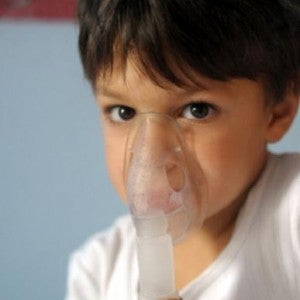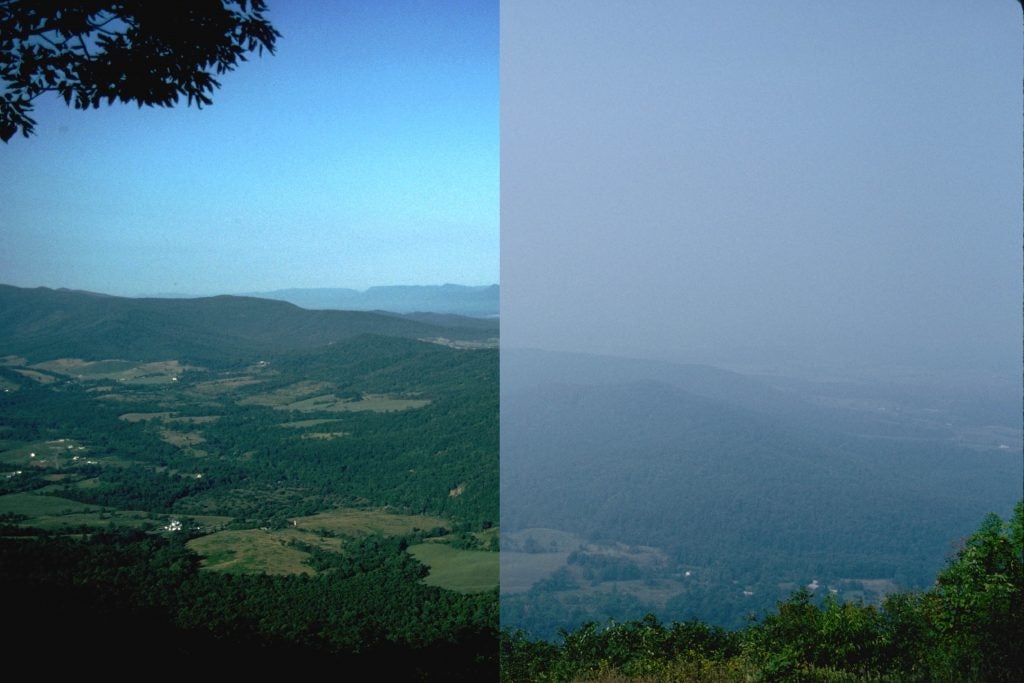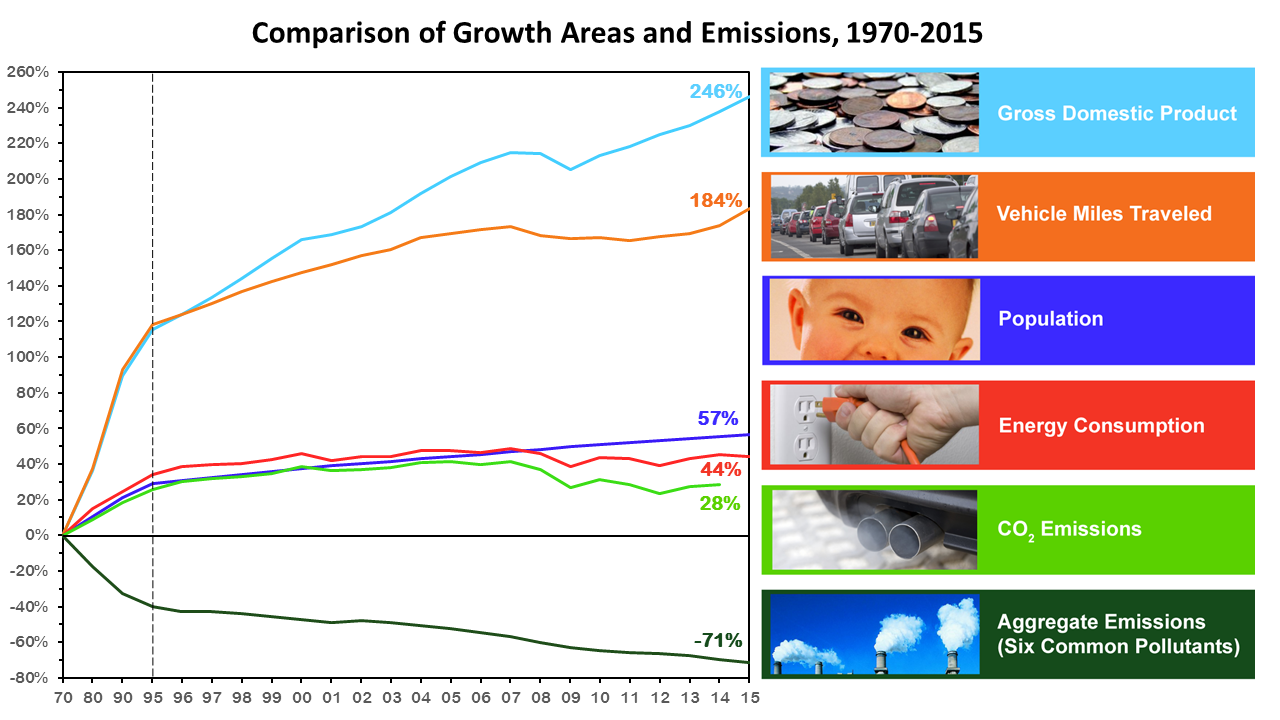
Wikimedia Commons
The Environmental Protection Agency’s (EPA) critical mission to protect health and the environment is strongly supported by the public, which is why it is incredibly alarming to see that President’s Trump’s new “skinny budget” would cut EPA’s funding by 31 percent.
Half of EPA’s budget goes to states, tribes, local agencies, and non-profits, which help carry out EPA’s lifesaving mission and provide significant benefits to communities in the process. EPA also provides essential technical guidance, assistance, scientific research, coordination, and more to help states and others protect health and the environment. Budget cuts to EPA would jeopardize Americans’ health and the safety of their communities.
In addition to the vital programs that protect our air and water, these are a few examples of programs that EPA oversees – and that are now at risk.
Cleaning Up Pollution from School Buses
School buses take 25 million American children to and from school every day. Many of these buses are old and their exhaust includes harmful pollutants like nitrogen oxides, particulate matter, and toxics.
Children are particularly vulnerable to pollution given their faster breathing rates and developing respiratory systems. Exposure to this pollution can aggravate asthma and cause other health problems.
Newer diesel engines are 90 percent cleaner than the old ones, however. So EPA administers a program for school districts to help them fix the problem. School districts can apply for rebates to replace or retrofit older buses under the Diesel Emissions Reduction Act (DERA) – a broadly bi-partisan program enacted by Congress. More than 500 school districts applied for this program in 2016 and 88 school bus fleets from 27 states were selected. More than 400 older diesel buses will be retrofitted or replaced thanks to DERA.
The 2016 grant recipients include:
- Marana Unified School District #6 in Arizona, which received $465,000 to replace or retrofit 20 buses
- Three school districts in Michigan (Haslett, Hudsonville, and Whittemore) that received $180,000 for nine buses
- Three school districts in Pennsylvania (Carlisle, Glenmoore, and Philadelphia) that received $305,000 for 17 buses
The school bus program provides essential funding to school districts that need it. And we know that cleaning up buses is working – a recent study found that children in schools that had adopted cleaner fuels and technology were absent less and had improved lung function. Experts estimate that there are 250,000 older, dirtier school buses still in operation, indicating that we – and EPA – have much more work to do to protect children’s health.
(The school bus program is just one part of the DERA program to reduce diesel emissions. Find total DERA allocations to all states, from 2012-2016, here.)
Chesapeake Bay Program
The Chesapeake Bay ecosystem provides more than $100 billion in economic benefits each year to the region’s 18 million residents, yet has for years been threatened by air and water pollution.
The Chesapeake Bay Program, created in 1983, is a partnership of six states (Delaware, Maryland, New York, Pennsylvania, Virginia and West Virginia), the District of Columbia, the federal government, and numerous local governments and NGOs dedicated to restoring this iconic feature of the Mid-Atlantic.
EPA plays a vital coordination and technical advisory role for the Chesapeake Bay Program, setting goals and assisting local jurisdictions’ efforts to meet them. About two-thirds of the $70 million or so EPA dedicates to the Chesapeake Bay Program flows to state and local governments as grants.
Successful — yet ongoing — cleanup efforts include:
- Between 1985 and 2015, the Chesapeake Bay Program has reduced harmful nitrogen water pollution by 30 percent, phosphorus by 40 percent, and sediment by 25 percent.
- The outlook for fish and blue crab habitats, as well as key wetlands and underwater grasses, is also improving.
- A new agreement signed in 2014 launched a more robust, accelerated restoration pathway that is still being implemented and just starting to show signs of progress.
Budget cuts to the Chesapeake Bay Program would jeopardize these encouraging trends.
Cleaning up Brownfields and Toxic Sites
Brownfields – properties contaminated by a hazardous substance – present a significant challenge to communities.
There are almost half a million Brownfields sites across the country. EPA provides technical assistance and administers several grant programs for states, local governments, and tribes to clean these sites up, conduct assessments, do job training, develop plans for use of the properties, and more.
These projects not only protect a community’s health and citizens, they also provide valuable economic and societal benefits by bolstering redevelopment efforts in existing communities —turning abandoned properties and eyesores into engines for job creation and economic growth.
In fiscal year 2016, projects created $16.11 per EPA dollar expended. Brownfields projects have overall created more than 117,000 jobs nationwide and have been found to increase residential property values near a Brownfields site by as much as 15.2 percent when a cleanup is completed.
A few projects funded or completed include:
- $600,000 awarded for cleanup of a former tannery in Berwick, Maine. The vacant property was used for 100 years for leather tanning, woolen milling, and shoe and carriage manufacturing. Contaminants include VOCs, PAHs, and metals in soil and groundwater.
- In Shelby, Montana, a largely abandoned historic school building was assessed for environmental issues, and asbestos and lead were cleaned up as part of a $200,000 EPA grant. The school was turned into a community center and was estimated to create 15 permanent jobs.
- With $250,000 in EPA grant funding, the town of Fletcher, North Carolina turned a former log home manufacturing facility into a town hall. The project included clean-up of dioxin (a chemical that can cause reproductive and developmental problems and cancer) and pentachlorophenol (a chemical associated with cancer and other harmful impacts to human health).
According to EPA and U.S. Census data, approximately 104 million people (one-third of the U.S. population) live within three miles of a Brownfields site that received EPA funding, including more than one-third of all children under the age of five.
Reducing Lead
Thanks to the EPA’s decades-long effort to address the threat of lead pollution, blood lead levels across the country have declined more than 90 percent since the mid-1970s (see this interactive EDF graphic to learn more about the policies that helped). These efforts have protected countless children from the lifelong burden of diminished IQ from early childhood lead exposure.
However, according to the Centers for Disease Control and Prevention, at least four million households have children living in them who are still being exposed to high levels of lead —highlighting the need for continued EPA efforts and funding in this area.
Over the past five decades, EPA has worked to reduce or eliminate the use of lead in gasoline, paint, plumbing pipes, and soil. EPA provides lead reduction grants to states, territories, and tribes to help them implement programs to mitigate lead-based paint in homes. EPA also conducts extensive outreach to educate the public about the health risks of lead exposure, and manages a national certification program for contractors who work on homes containing lead. Last year, EPA took more than 100 enforcement actions to require property managers and contractors to protect vulnerable communities from the dangers of lead.
A few examples of funded EPA programs include:
- $243,007 awarded to the Arkansas Department of Health to administer and enforce the state’s lead based paint program, which will support training for lead inspectors and lead enforcement activities, and will help protect children from lead poisoning.
- One of EPA’s regional offices (representing Arkansas, Oklahoma, Texas, Louisiana, New Mexico and 66 tribes) provided $898,384 in grants for work on lead abatement programs, which include providing training for lead inspectors, conducting outreach, conducting inspections of contractors engaged in lead-based paint abatement activities, and enforcement action.
- The Ohio Department of Health was awarded more than $55,000 to develop and refine its state lead licensing program and almost $375,000 to administer its lead accreditation and certification program in FY 2016.
These programs are just a small snapshot of the lifesaving programs EPA implements to protect public health. Programs like these could be completely eliminated or severely cut if the “skinny budget” is adopted by Congress.








 The Environmental Protection Agency has restored healthier air and cleaner water for millions of Americans, bringing our country back from the brink of far-reaching – and dangerous – industrial pollution. All Americans in red, purple and blue states alike have benefited profoundly from the balanced safeguards EPA has put in place.
The Environmental Protection Agency has restored healthier air and cleaner water for millions of Americans, bringing our country back from the brink of far-reaching – and dangerous – industrial pollution. All Americans in red, purple and blue states alike have benefited profoundly from the balanced safeguards EPA has put in place.